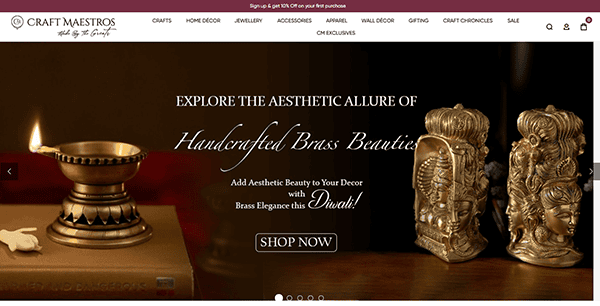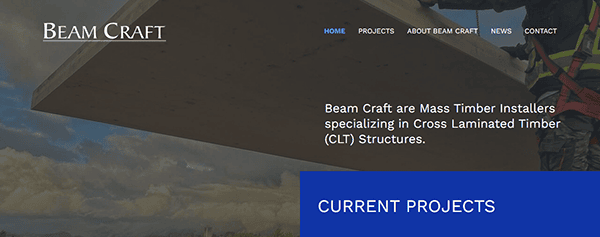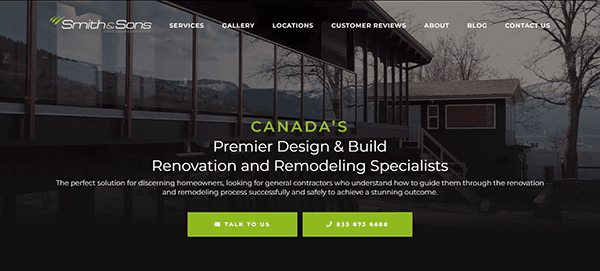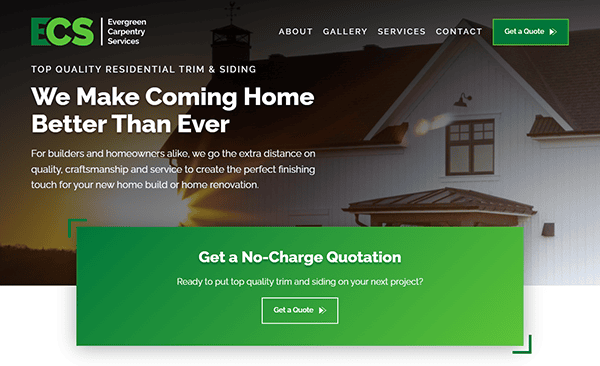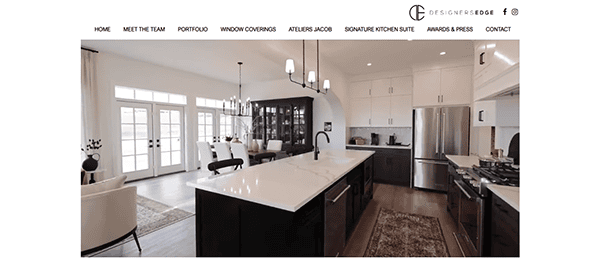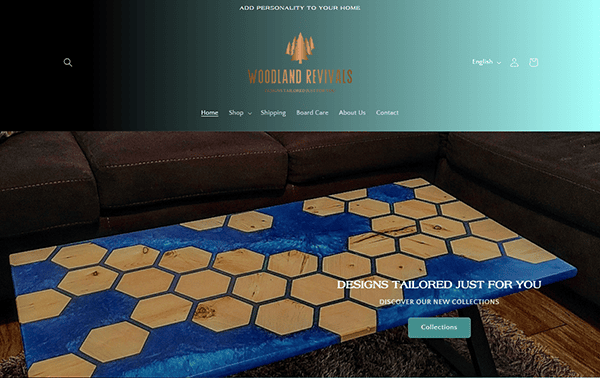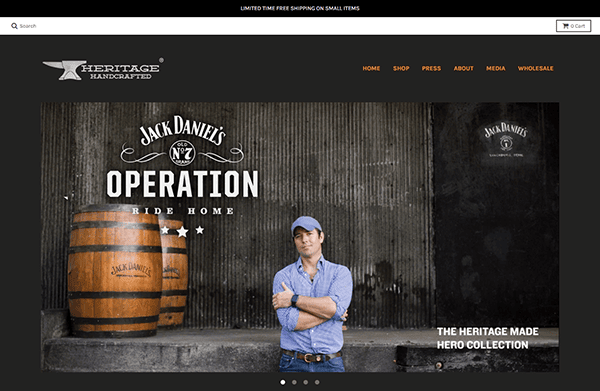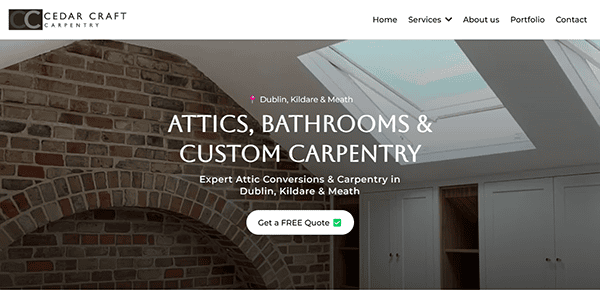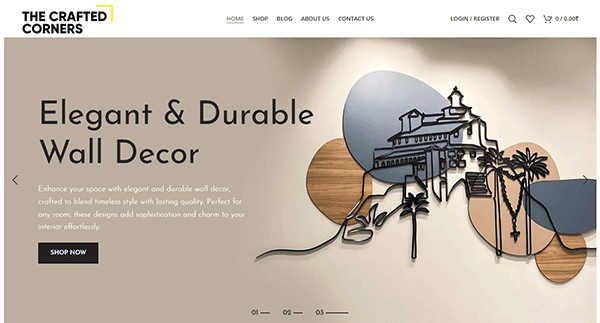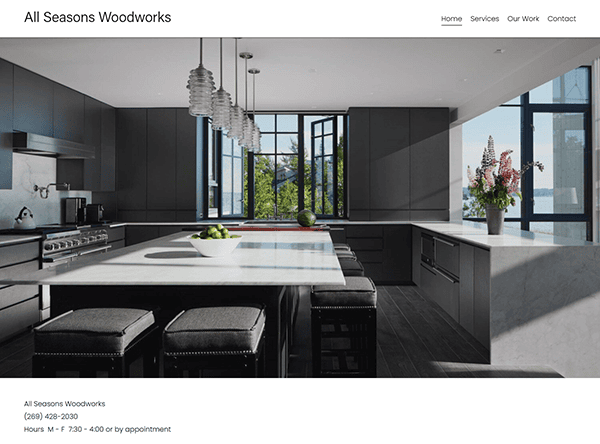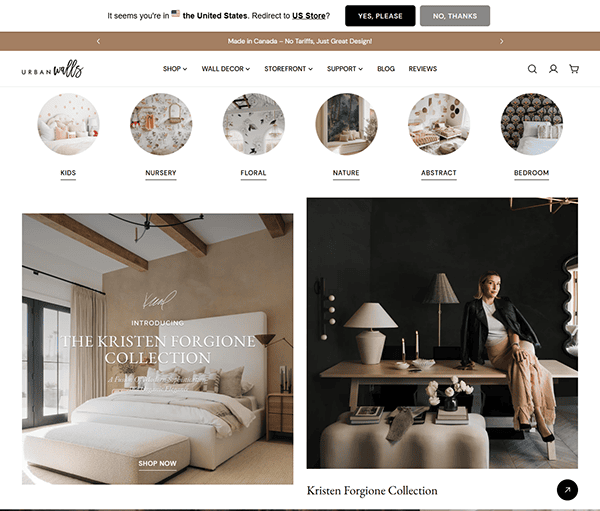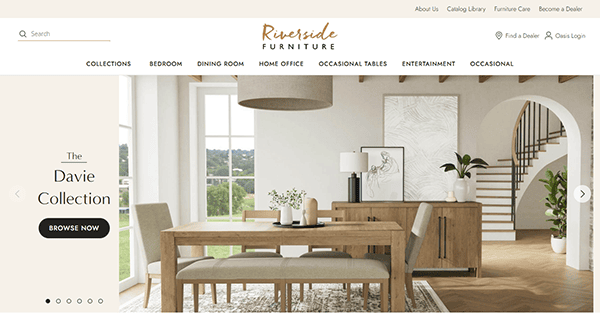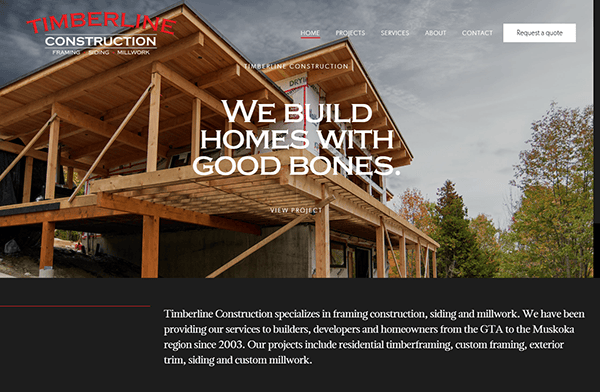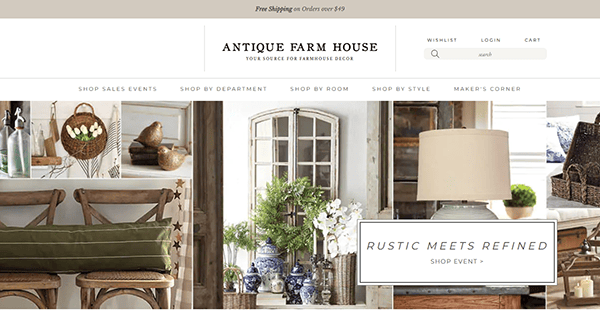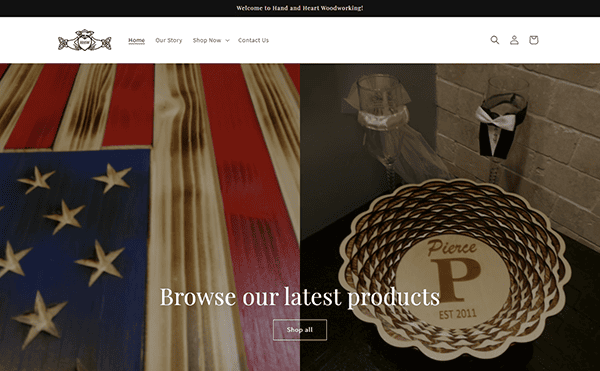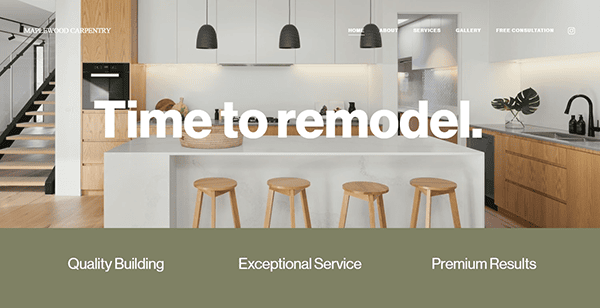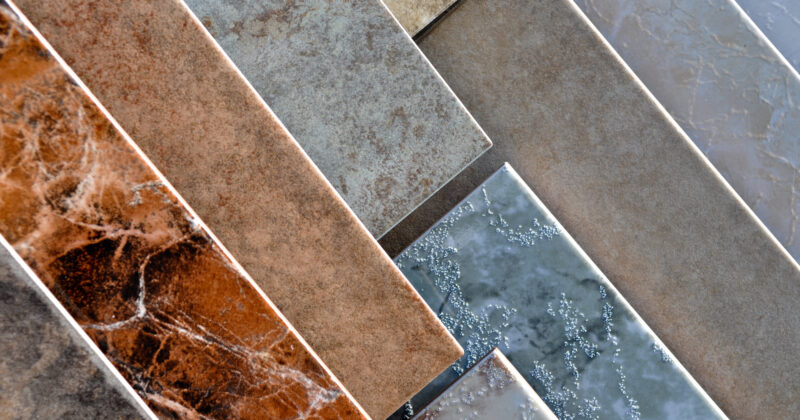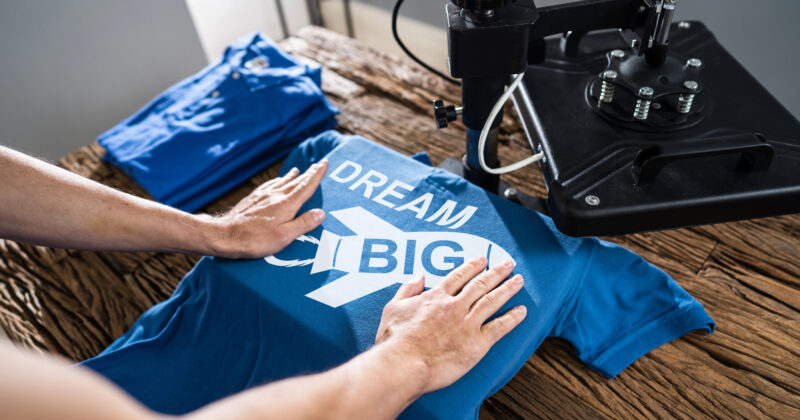Carpentry has been a cornerstone of craftsmanship for centuries, evolving from traditional woodworking to today’s cutting-edge practices. Whether you specialize in bespoke furniture, cabinetry, or large-scale construction, your online presence should capture both your style and your dedication to exceptional quality. An effective carpenter website can serve as a digital showroom that draws in potential clients and showcases your unique expertise.
Today’s carpenters benefit immensely from an online strategy that highlights their portfolio, encourages lead generation, and reflects the personality of their brand. By investing in a professional site, you send a strong message that you care about every detail, right down to the user’s experience. Visit CyberOptik Websites to see how an effective online platform can uplift your carpentry business and deliver tangible results.
A polished online presence sets you apart from those who merely rely on word-of-mouth. From clean layouts to compelling imagery, a thoughtful carpenter web design can help you communicate craftsmanship, build trust, and bring your services directly to your audience’s fingertips. Whether you’re a one-person operation or a growing company, a well-structured, visually appealing website is no longer optional — it’s essential.
Examples of the Best Carpenter Website Designs
- Timber & Chisel: It excels at blending rustic aesthetics with a modern touch. Their homepage showcases large, high-resolution images of carefully crafted furniture and interior builds, immediately capturing the attention of woodworking enthusiasts. Each page is designed to guide visitors toward the gallery, revealing an impressive portfolio of projects spanning everything from handcrafted doors to sophisticated cabinetry. A frequently updated blog discusses the latest trends and innovative techniques in carpentry. The combination of warm color palettes and intuitive navigation makes the user experience welcoming.
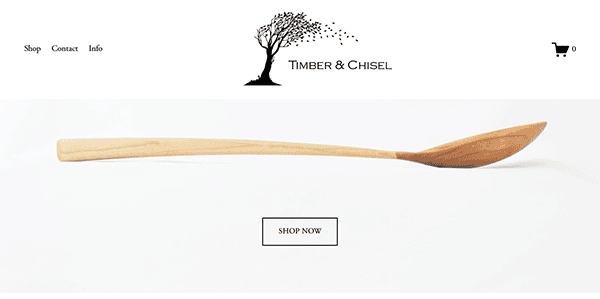
- Oak & Iron: Oak & Iron Co.’s website presents a clean and minimalist design, effectively highlighting their custom carpentry and fine woodworking services. The homepage features high-quality images of their bespoke creations, immediately showcasing their craftsmanship and attention to detail. Navigation is straightforward, with clear links to sections such as “Built-Ins,” “Home Decor,” and “Furniture,” allowing users to easily explore their offerings. The concise descriptions and prominent contact information facilitate seamless communication for potential clients.
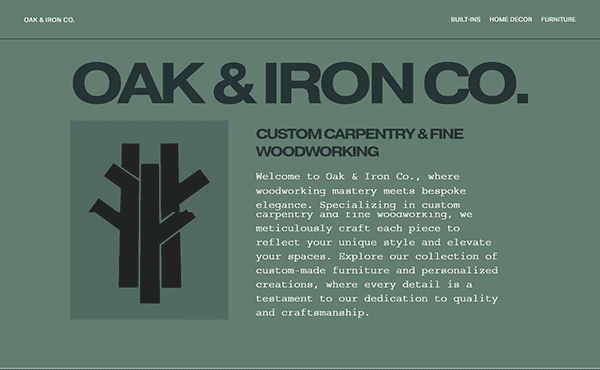
- Craft Maestros: Its website offers a minimalist design that still feels rooted in traditional carpentry. Their logo, a simple chisel icon, sets the brand’s tone. Each section of the site delivers a clear message, like expert carpentry web design or custom solutions, with strategic calls-to-action leading visitors to specific service pages. The portfolio page includes residential and commercial case studies, helping potential clients gauge the breadth of the team’s skill set. The warm color scheme evokes a sense of trust, while the crisp typography keeps the text easy to read.

- Barnes Custom Woodworks: The website demonstrates how carpentry web design can balance artistry and user-friendliness. Large, dynamic project images greet you upon arrival, followed by a carefully curated list of specialties, such as furniture restoration and interior detailing. An interactive map pinpoints their workshop location, encouraging local clients to reach out. Pop-up testimonials appear unobtrusively as you scroll, offering genuine feedback from satisfied homeowners. By simplifying navigation, the site ensures visitors can quickly find exactly what they need — whether it’s requesting a quote or exploring product galleries.
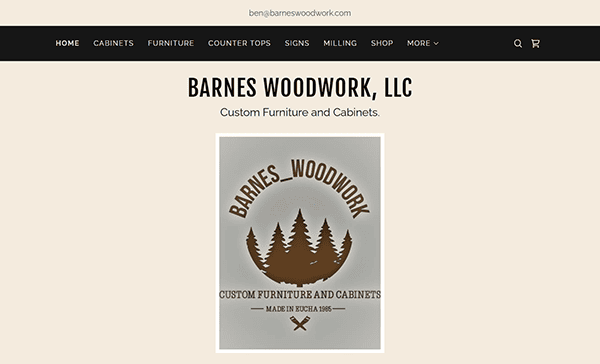
- Beam Craft: Its website is a shining example of how carpentry web design can incorporate modern aesthetics without losing touch with traditional woodworking appeal. Their creative use of parallax scrolling provides a sense of depth as you navigate through various project photos and design philosophies. Each service category features easy-to-read icons, making it straightforward for visitors to locate specific services like deck building or antique restoration. The social media feed adds authenticity, showcasing behind-the-scenes glimpses into their workshop operations.

- Smith & Sons Carpentry: It welcomes users with a cozy, workshop-inspired background video. Right from the homepage, it’s evident that this company values craftsmanship and has years of experience under its belt. A robust services page outlines everything from remodeling to custom cabinetry, each with thorough descriptions and pricing tiers. Prospective customers can easily book consultations online, making the entire process seamless. The real highlight is the project gallery, where images expand into a full-screen lightbox that includes detailed project overviews and client quotes, giving visitors both visual appeal and context.

- EverGreen Carpentry: It stands out for its eco-friendly approach to carpentry. Their website’s earthy color scheme and abundant use of natural imagery align perfectly with their sustainable brand mission. A dedicated “Materials & Sources” page delves into where they obtain their responsibly harvested wood, emphasizing transparency. Client stories on the homepage highlight the tangible impact of choosing an eco-conscious carpenter. Each project entry in the gallery includes an estimated carbon footprint saved by using their preferred materials.

- Designer Edge: Designers Edge’s website presents a sleek and modern design, effectively highlighting their comprehensive interior design and window covering services in Calgary. The homepage features high-quality images of their projects, showcasing their expertise and attention to detail. Navigation is intuitive, with clear menus directing users to sections like “Meet the Team,” “Portfolio,” and “Contact,” facilitating easy access to information. The “About Us” section provides a concise history of the company, emphasizing its evolution and commitment to excellence.

- Woodland Revival: Its website exudes rustic charm, thanks to an earthy design aesthetic built around woodgrain textures and vintage typography. Upon arriving, visitors are greeted by a charming introduction that discusses the brand’s origin story, setting a personable tone. Each page features consistent design elements, maintaining cohesiveness as you learn more about their specialties, which range from custom-made tables to entire home renovations. Simple contact forms and embedded social media links facilitate fast communication.

- Heritage Handcrafted: It sets itself apart by emphasizing personalization in every aspect of its website. Their services are categorized into distinct tabs — from residential to commercial work — enabling clients to pinpoint their needs quickly. A dedicated “Meet the Team” page features short bios and friendly headshots that enhance trust and relatability. There is an informative blog loaded with how-to tips, design inspirations, and advice on preserving wood surfaces. The smooth transitions between pages and subtle animations elevate the user experience without overwhelming visitors.

- Cedar Craft Carpentry.: The website adopts a bright, airy layout that underscores their passion for modern, minimalist carpentry. Large sliders display samples of past work, each accompanied by a quick text overlay describing the project scope and unique challenges. Navigation is straightforward, with sections such as “What We Do,” “Our Portfolio,” and “Contact,” facilitating easy access to information. The inclusion of customer testimonials adds credibility, reflecting positive experiences from clients.

- Crafted Corners: It is a masterclass in carpentry web design that feels both exclusive and down-to-earth. The layout is carefully arranged to highlight high-quality images, emphasizing detailed joinery and finishing touches. Subtle animations guide your eyes down each page, unveiling service offerings, testimonials, and an extensive project gallery. The contact form is minimalistic but prompts potential clients to specify which service they’re interested in, ensuring more focused responses. The website’s consistent style — blending crisp typography with warm, earthy accents — perfectly mirrors the brand’s identity.

- All Seasons Woodworks: The website features a clean and modern design that makes navigation intuitive and easy. The homepage is visually appealing, with high-quality images that showcase the services or products in a professional way. The site’s structure is well-organized, with clearly labeled menus that guide visitors to the most relevant sections, such as products, services, testimonials, or blog posts. Each page includes high-resolution photos accompanied by brief but insightful project narratives.

- Urban Walls: Urbanwalls Canada’s website features a vibrant and engaging design, effectively showcasing their removable wall decals, wallpapers, and murals. The homepage is visually appealing, with high-quality images that immediately draw attention to their product offerings. Navigation is smooth, with clearly labeled menus that make it easy to explore different collections and shop by category. A notable feature is the live chat functionality, allowing customers to get real-time assistance, which enhances user experience and customer support. The inclusion of customer reviews adds credibility, helping shoppers make informed decisions based on real feedback.

- Riverside Furniture: Its website greets visitors with a soothing color palette reminiscent of gentle river hues. Their homepage focuses on forging a personal connection, featuring an introductory note from the founder about why they love woodwork. Each project spotlight includes a short behind-the-scenes video, giving potential clients insight into how their high-quality pieces are made. Well-placed testimonials instill confidence, while the clear call-to-action nudges visitors to schedule a free consultation. Riverside Craftsmen’s focus on storytelling fosters a sense of authenticity that resonates strongly.

- Carver Companies: Carver Companies’ website is all about simplicity, from their geometric logo to their streamlined navigation menu. Their contact information is displayed prominently in the header so potential clients can easily contact them. A helpful resources page outlines important woodworking terminologies, helping homeowners better communicate their vision. The website is peppered with photos of the team at work, reinforcing a hands-on vibe. Thoughtful placement of client reviews at the bottom of each page offers consistent reminders of the company’s reliability.

- Timberline: It takes pride in a balanced blend of modern design principles and vintage charm. The homepage positions their most recent projects in a visually stunning carousel, each linking to a dedicated case study page with a detailed walkthrough of the process. A unique feature is their interactive “Material Gallery,” where visitors can learn about various wood grains and finishes. Blog posts are systematically categorized, discussing trends, tips, and standard procedures in carpentry. The design is thoroughly responsive, ensuring seamless browsing on tablets and smartphones.

- Antique Farmhouse: Antique Farmhouse’s website presents a rustic and inviting design, effectively showcasing its curated selection of farmhouse décor, industrial pieces, and shabby chic items. The homepage features high-quality images and organized categories, allowing users to navigate various product offerings easily. The site emphasizes support for small business artists, highlighting unique, handcrafted items across the United States.

- Hand & Heart Woodworking: Hand and Heart Woodworking’s website features a clean and organized design, effectively showcasing their handcrafted wooden products, including baskets, boxes, and rustic American flags. The homepage highlights featured products with high-quality images, allowing visitors to easily browse and appreciate the craftsmanship. Navigation is straightforward, with clear categories such as “Small Wooden Boxes,” “Large Baskets,” and “Wood American Flags,” facilitating seamless exploration of their offerings. The “Our Story” section provides insight into the company’s background and dedication to quality, fostering a personal connection with potential customers.

- Maplewood Carpentry: Maplewood Carpentry is dedicated to creating modern, sleek products for urban homes and offices. Their homepage sets the tone by presenting a slideshow of avant-garde pieces with interactive hotspots that reveal hidden features. Engaging animations guide visitors from one section to another, directing them to explore the company’s unique selling points. A well-structured FAQ covers lead times, material sourcing, and standard design options, helping clients make informed decisions. The website’s consistent branding across every page exudes a professional touch.

Whether you’re working on a small-scale renovation or a large commercial build, these websites show that strategic carpentry web design can effectively attract potential clients and communicate brand value. From traditional aesthetics to modern minimalism, each site highlights unique approaches to layout, imagery, and user engagement. By evaluating these examples, you can identify strategies that will resonate best with your audience and help you shape a winning online presence.
If you’ve taken inspiration from these carpenter websites, the next step is to plan out how to present your work, knowledge, and passion. Ensure that your site is user-friendly, visually appealing, and packed with relevant content. Thoughtful organization of services, clear calls-to-action, and genuine testimonials will keep visitors engaged and encourage them to reach out.
As the field of carpentry continues to grow and evolve, your website should adapt alongside it. Fresh content, updated portfolios, and consistent branding reinforce your expertise to both returning and new customers. It’s about showing your clients that you care about the details — not just in your craft, but in how you present your business online.
Top 10 Important Aspects of a Carpenter Website
- Professional Branding: Clear logos, consistent color schemes, and a unified brand message set a trustworthy tone.
- High-Quality Imagery: Crisp, detailed photos of your projects showcase your craftsmanship and help clients visualize what you can do for them.
- Mobile Responsiveness: Ensuring a smooth user experience on smartphones and tablets is vital in today’s mobile-driven world.
- Simple Navigation: User-friendly menus and logical page structures let visitors find what they need without confusion.
- Services Overview: Clearly outline the range of services you offer, from initial consultation to final installation.
- Client Testimonials: Positive feedback builds credibility and reassures visitors of your expertise and reliability.
- Engaging Calls-to-Action: Buttons or links prompting quote requests or consultations can help drive leads and inquiries.
- Project Portfolio: Galleries or slideshows with detailed descriptions demonstrate your level of skill and specialization.
- Fast Loading Speed: Quick page loads reduce visitor frustration and improve overall user satisfaction.
- Contact Accessibility: Prominent contact forms or buttons ensure prospective clients can reach out with minimal effort.
FAQs About Carpenter Web Design
How can I make my carpenter website stand out from competitors?
Focus on a clean, modern layout and highlight your unique selling points through high-quality photos and compelling content. Emphasizing personal stories, client testimonials, and specialized techniques helps create a memorable impression.
What platform is best for building a carpenter’s website?
WordPress is often recommended for its user-friendliness, powerful features, and wide range of customizable themes and plugins suited for carpentry businesses.
How much does it typically cost to design a carpenter’s website?
Basic websites can begin at around $2,000 and increase from there based on added features like e-commerce, custom coding, or in-depth portfolio functionality. Ultimately, the scope of your project determines the budget.
How often should I update my carpenter website?
Keeping your site current is important, but avoid making changes solely to appease search engines. Make sure every update you publish provides real value to visitors, such as new projects or fresh blog content.
Why is visual content crucial for carpentry web design?
Striking visuals showcase the quality and detail of your work, helping potential clients understand the craftsmanship you bring to every project. Images and videos can also make your brand more relatable.
Ready to elevate your carpenter business’s website? Contact CyberOptik for a free proposal for your new carpentry web design and set your business up for success.


